The skirt steak is one of the most underrated cuts of beef on the market. And given its versatility and attractive beefy flavor, it has an astounding quality-price ratio.
Part of what has been holding the skirt steak back is the lack of knowledge around it. After all, this is not a popular steak, especially if compared to rib-eyes and sirloins. Still, there’s immense pleasure in cooking skirt steak right.
What is a Skirt Steak?
The skirt steak is a long, 20–24-inch, thin piece of meat, often 3-4 inches wide. Considered a ‘thin cut,’ every beef carcass contains close to 3.4 pounds of skirt steak, divided into two inside skirt steaks and two outside skirts steaks.
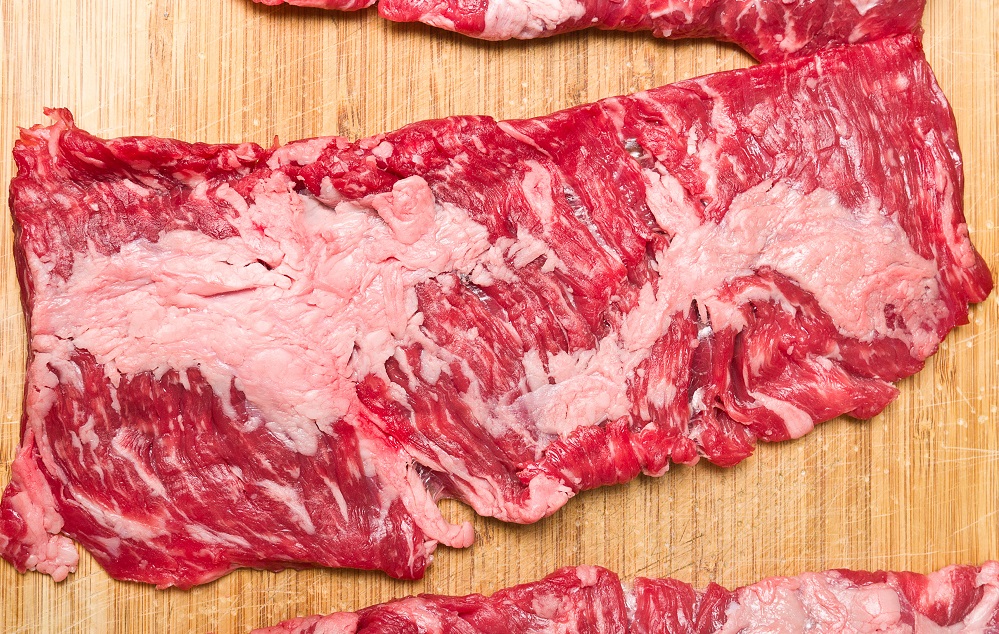
The skirt steak comes from the plate primal on the cow’s lower rib cage and shares similarities to several other thin cuts, including the flank steak and the hanger steak. Both inside and outside flank steaks are part of the diaphragm muscle attached to the middle ribs (6th to 12th) on the underside of the plate.
Once considered an inferior steak, the skirt steak is now prized for its versatility and moderate price. Understanding the skirt steak will open new possibilities both in the grill and kitchen with outstanding results.
Outside Skirt Steak vs Inside Skirt Steak
Both the outside and inside skirt steaks are long cuts of meat with a tight grain and lots of connective tissue; they support the steer’s diaphragm. At first sight, the outside skirt is longer and wider than the inside steak, and it’s thicker as well.
The outside skirt is attached to the outer wall of the steer’s chest, while the inside skirt steak is cut from the inside chest wall, running parallel to the belly. And although the outside skirt is covered with a membrane that must be removed, its larger size and more even shape make it more desirable for restaurants and steakhouses. The inside steak is more often than not found in supermarkets.
Both types of skirt steak are intensely flavorful but tough and require unique cooking methods. Still, if you have the opportunity to try inside and outside skirt steaks side by side, you’ll immediately notice their differences while understanding why they’re often considered one and the same.
Skirt Steak’s History
The skirt steak was considered offal, and cattle ranchers in the American South often gave away these tough cuts to the field workers, often of Mexican origin. It was on the fields over an open flame where the skirt steak gained popularity as the famous “arrachera.” It became a key ingredient in dishes of Mexican inspiration, including skirt steak tacos and fajitas.
The skirt steak has always enjoyed popularity down south in Argentina, an authentic beef powerhouse, for the same reason. Cattle ranchers enjoy skirt steak or “entraña” (literally meaning gut) as part of their grilled meat extravaganzas or asados.
With a wider acceptance of international cuisines, the skirt steak soon found its way to steakhouses and ethnic eateries in America as the main ingredient in stir fryes, fajitas, carne asada and others. Today, the skirt steak still flies under the radar, but more people are finding the versatile steak a terrific addition to their grilling repertoire.
The Plate Primal Explained
The plate or short plate is one of the eight main beef primal cuts of a steer. It’s located below the rib primal, behind the brisket and in front of the flank. The plate can be divided into just a few subprimals or cuts.
In a nutshell, in the plate primal you’ll find short ribs, the skirt steak and the hanger steak. The rest of the meat is often used to make ground beef or charcuterie. There’s no doubt both the outside and inside skirt steaks are the most prized cuts of beef from this lesser-known primal.
The Difference Between the Skirt Steak, Flank Steak and Hanger Steak
We’ve explained what a skirt steak is. Now, let’s mention a few steaks commonly used as substitutes and often mistaken with authentic skirt steak.
The flank steak comes from the flank primal in the steer’s abdominal area. Just as the skirt steak, this is a tough muscle with lots of connective tissue. The flank steak is leaner than the skirt steak. It’s less tender than the inner skirt steak and equally tender to the outside skirt steak.
The hanger steak is also a budget cut, but it’s noticeably smaller than the skirt steak, often only 7 inches long. This muscle is suspended from the last rib to the loin, and literally hangs from the steer’s diaphragm. This steak has a tough membrane running through it that must be removed. Flavor and texture-wise, the hanger steak is a great substitute for skirt steak.
How to Cook Skirt Steak
Skirt steaks are tough muscles with a tight grain, so they benefit from an acidic marinade. You might even find skirt steaks wet-packed in a marinade, guaranteeing a softer texture.
Skirt steaks are best cooked on the grill over high heat, but you should never go over medium-well doneness, as the meat can become increasingly chewy. A wet heat method, such as braising and high-heat flash cooking, as in stir-frying, are also adequate.
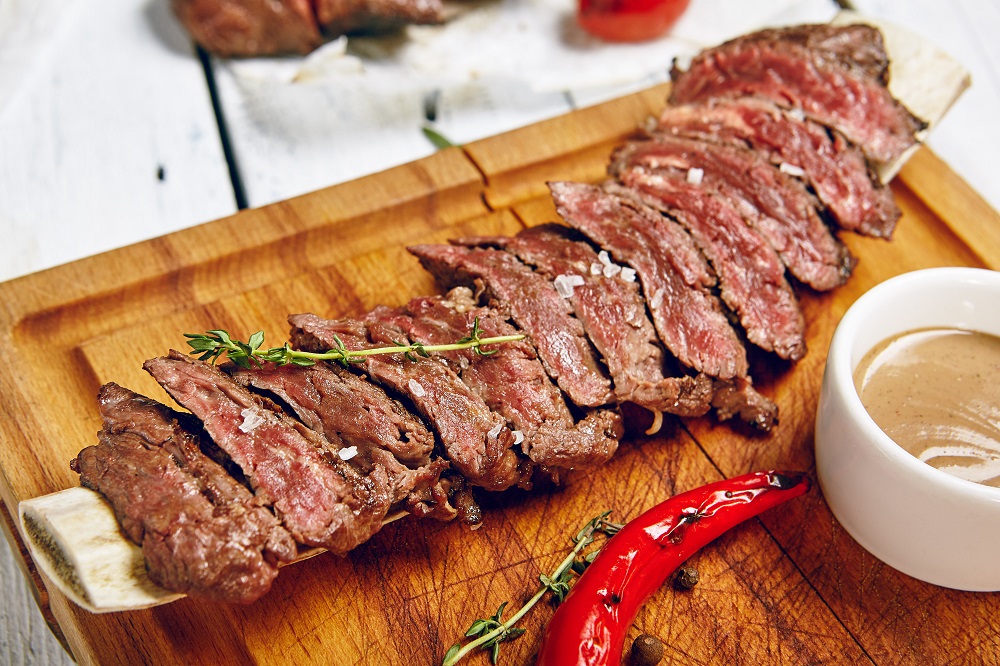
Perhaps the most important thing about cooking skirt steak is making sure you cut the meat against the grain, effectively cutting the connective tissue for tender and flavorful results.
Use skirt steaks for fajitas or steak tacos and toss it with your favorite vegetables in an Asian-inspired stir fry. Skirt steak is delicious on its own as well, as long as it’s cooked right, and it makes for an inexpensive but wholesome steak dinner.

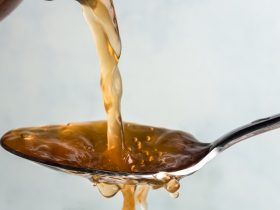

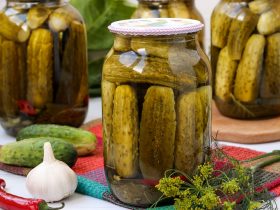
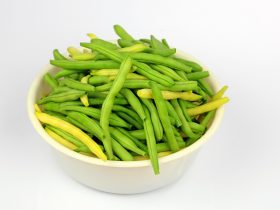
Hi, I'm Dom
Dom Eats was started to help other people fall in love with food. While cooking can feel intimidating, it doesn't have to be.